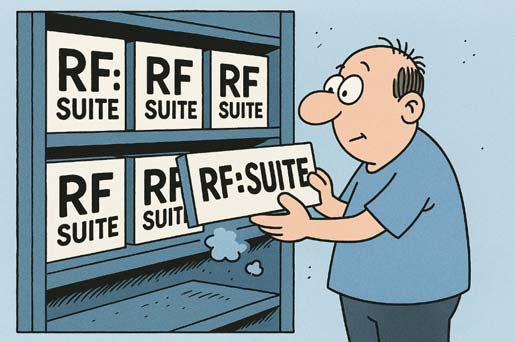Der menschliche Faktor in der virtuellen Inbetriebnahme
Wir definieren die virtuelle Inbetriebnahme als ein Qualitätstor für das System und die Inbetriebnahme. Es ist das erste Mal, dass SPS- und Roboterprogramme tatsächlich zusammenarbeiten. EPLAN, PPlan, Funktionspläne und andere Dokumente werden während der Modellierung geprüft, und das System selbst wird in der virtuellen Inbetriebnahme auf Herz und Nieren getestet… Nur ein entscheidender Teil wird dabei nicht geprüft: der menschliche Faktor.
Wir haben dies erkannt und beschlossen, den Menschen in den Prozess der virtuellen Inbetriebnahme einzubeziehen. Besonders wichtig ist uns dabei das Zeitverhalten, um den Einfluss auf den laufenden Prozess sowie die Arbeitsbelastung der Menschen analysieren und bewerten zu können.
Dazu haben wir die Experten für Menschensimulation ins Boot geholt. Die ema-Software-Suite der imk Industrial Intelligence GmbH ist genau das richtige Werkzeug dafür. In enger Zusammenarbeit haben wir die Integration der ema-Menschensimulation in unsere 3D-Simulation RF::YAMS entwickelt. Das Ergebnis ist RF::emaHM.
Projektplanung
Anders als bei Projekten ohne emaHM, bei denen die Logik für die Produkterstellung, das Unterbrechen von Scannern/Lichtschranken und die Bestätigung durch den Bediener erstellt wird, wird dieser Prozess nun in emaHM geplant. Es werden verschiedene Abläufe erstellt, die anschließend durch einen Startbefehl ausgelöst werden. Der virtuelle Bediener beginnt damit, ein oder zwei Teile aufzunehmen, sie einzusetzen, die manuelle Spannvorrichtung zu schließen und das Schutztor zu bestätigen.
Es ist nun möglich zu analysieren, ob der Werker es schafft, eine oder mehrere Stationen in der vorgegebenen Zeit zu beladen, sodass es im System zu keinen Wartezeiten kommt. Ebenso lässt sich leicht erkennen, wie stark ein Werker während seiner Tätigkeit ausgelastet ist. Gibt es genügend Puffer, um unvorhergesehene Arbeiten durchführen zu können, oder müsste der Werker acht Stunden lang von einer Station zur nächsten eilen – was langfristig nicht tragbar wäre? Was passiert, wenn der Bediener mit einem oder mehreren Takten nicht mithalten kann oder eine Störung beheben muss? All diese Fragen lassen sich nur dann mit Sicherheit beantworten, wenn der Mensch ebenfalls adäquat simuliert wird.
Fallstudie
Im Rahmen eines Projekts mit mehreren Handarbeitsstationen haben wir die neu entwickelte Funktion erstmals direkt in der Praxis getestet. Da die Integration der Menschensimulation in den bestehenden Workflow der virtuellen Inbetriebnahme noch nicht vollständig abgeschlossen war, standen nicht alle erforderlichen Informationen zur Verfügung. Um die Ergebnisse der Simulation vollständig und korrekt bewerten zu können, benötigten wir neben den standardmäßig verfügbaren Daten auch detaillierte Informationen zu den Wegen und Positionierungen der Produkte außerhalb der Zelle. In enger Zusammenarbeit mit unserem Kunden konnten wir diese zusätzlichen Informationen problemlos beschaffen.
Im konkreten Anwendungsfall verfügte das untersuchte System über zwei separate Einsetzstationen, die sich an zwei Seiten der Zelle befanden. An einer Station mussten drei Produkte eingesetzt werden, an der anderen vier. Die Auswertung des Testlaufs zeigte, dass der Bediener zwar beide Stationen rechtzeitig versorgen konnte, jedoch auch, dass die ursprünglich geschätzte Zeit zu knapp bemessen war. Dieser enge Zeitplan stellte somit ein Risiko für die Zuverlässigkeit und Sicherheit des gesamten Produktionsprozesses dar. Im Zuge dessen wurden Anpassungen am Prozessdesign vorgenommen, um eine sichere und störungsfreie Produktion langfristig zu gewährleisten.
emaHM
Die integrierte Menschensimulation ist ein weiterer Schritt hin zur ganzheitlichen Simulation. Der digitale Zwilling, betrieben von RF::SUITE, wurde um ein weiteres wichtiges Puzzlestück erweitert.





